Famous Places in Peshawar Historical Landmarks Qissa Khwani Bazaar Peshawar Museum Bala Hisar Fort Cultural Attractions: Sethi House Museum Mahabat Khan Mosque Ghor Khatri Natural Beauty; Khyber Pass; Shahi Bagh; Chowk Yadgar Modern Attractions University of Peshawar, Hayatabad Islamia College Shopping and Cuisine Namak Mandi Karkhano Market Peshawar’s Attractions and Visitor Encouragement Peshawar, the dynamic capital of Khyber Pakhtunkhwa in Pakistan, is rich in history and culture. Peshawar has seen the rise and fall of empires, acting as a commerce and cultural hub from ancient times. Peshawar provides something for history buffs, cultural enthusiasts, and adventurers. Historical Landmarks
Qissa Khwani Bazaar
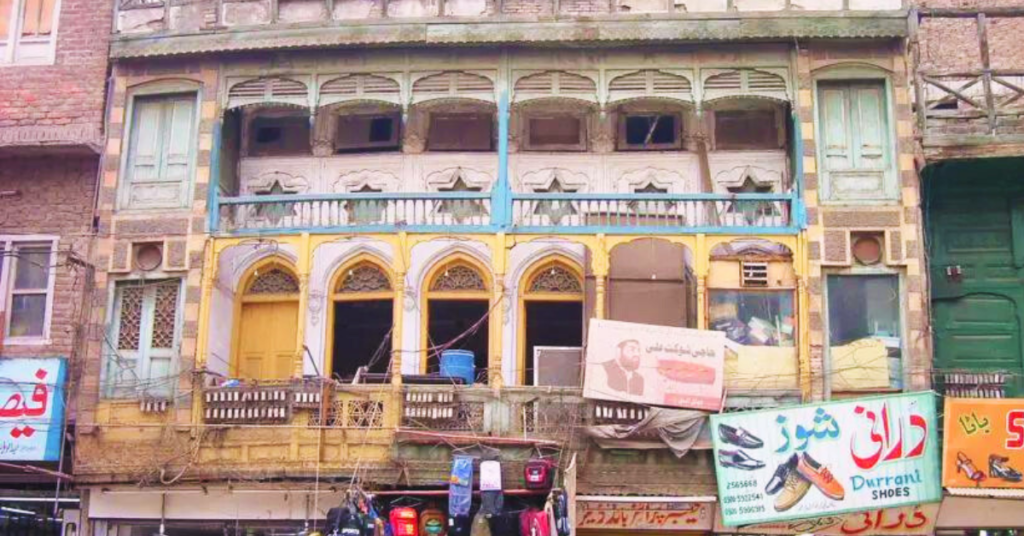
Qissa Khwani Bazaar Name origin, trade and commerce role, historical events, Traditional architecture, market layout and structure, Notable buildings, Cultural significance of Storytelling tradition, Cultural melting pot of Bazaar celebrities, Shopping Experience, Variety of Goods Famous Shops and Stalls, Bargaining Tips, Delicious Food, Street Food, Famous Restaurants, and Peshawari Dishes, Modern Qissa Attractions, and Preservation Best time to visit Qissa Khwani: BazaarTourist Tips Safety and Etiquette Qissa Khwani Bazaar.
Khwani Bazaar, the Bazaar of Storytellers, is one of Peshawar’s most famous and historic markets. This busy marketplace has been a hub of trade, culture, and storytelling for generations. Walking through its bustling streets, you can practically hear the echoes of ancient tales and feel the pulse of a city that has long been a crossroads of cultures. History & Background “Qissa Khwani” means “Street of Storytellers,” a reference to the area’s strong storytelling heritage. Storytellers used to perform at the bazaar, telling tales of adventure, romance, and folklore. Trade and Commerce Qissa Khwani Bazaar has long been a significant trade hub. Its strategic location on the old Silk Road attracted traders and travellers worldwide. Central Asian, Indian, and other goods were traded here, creating a cultural and commercial melting pot. Historical Events Qissa Khwani Bazaar was the site of many historical events, including the 1930 British colonial slaughter of unarmed demonstrators. This ceremony honours the bazaar’s role in independence and its people’s resilience. Qissa Khwani Bazaar’s architecture is a mix of colonial and traditional. Local artisans display their work in narrow, twisting lanes with finely carved wooden facades. The market is intricate, with tiny alleys and busy squares. The bazaar’s sections sell textiles, jewellery, spices, and antiquities, making it a shopper’s delight. Several significant buildings enhance the bazaar. A well-preserved 19th-century mansion, the Sethi House, showcases the region’s architecture. The old Peshawar cinema is another important building from the city’s cultural past. Cultural Value Storytelling Tradition distinguishes Qissa Khwani Bazaar. Storytellers, or qissa khwans, told heroic, romantic, and adventurous tales in tea rooms and public squares. Though rarer today, this ritual is part of the bazaar’s culture. The Qissa Khwani Bazaar has traditionally been a cultural melting pot. Traders and travellers from diverse locations and origins have enriched its culture. The bazaar’s bustling atmosphere and diverse wares and cuisines reflect this diversity. Famous People Associated with Qissa Khwani Bazaar include Peshawar-born Bollywood superstar Dilip Kumar. Famous poets, writers, and politicians have visited the market, adding to its history and culture. Qissa Khwani Bazaar is a shopper’s delight with a vast selection of items. Everyone can find something they like, from Peshawari textiles and jewellery to aromatic spices and exquisite antiques. Famous Shops and Booths The bazaar’s long-standing shops and booths give a unique look into the past. Spice shops are known for their unusual blends, while antique stores are historical treasures. Bargaining Tips Qissa Khwani Bazaar is known for bargaining. Be friendly but firm, know the approximate Value of the products you’re interested in, and be willing to walk away if the price is wrong to receive the best pricesPeshawar Museum Sethi House Museum
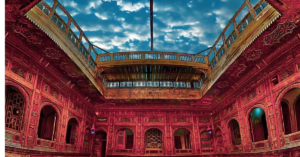
Peshawar Museum showcases history and culture in the city centre. This museum, founded in the early 20th century, displays thousands of years of artefacts, revealing the region’s rich legacy. Peshawar Museum offers a unique trip through time, from Gandhara to Islam. It formerly housed relics from Gandhara, a Buddhist cultural hub. The museum’s founding signified a major attempt to conserve and promote the area’s history and culture. The museum’s British colonial and Mughal architecture is stunning. This red-brick building with arches and domes reflects the architectural trends of its day. Historical artefacts, like the structure, enhance the museum’s appeal. Key Events Peshawar Museum has expanded and renovated multiple times to accommodate its growing collection. The addition of new galleries and advanced artefact conservation methods are a milestone. Gandhara Art The Peshawar Museum has one of the world’s largest Gandhara art collections. Historical context: Between the 1st and 5th century CE, Gandhara (now Pakistan and Afghanistan) was a centre of Buddhist culture and art. This art combines Greek, Roman, Persian, and Indian elements. Notable Pieces The Gandhara collection’s Buddha statues showing his life are notable. These statues’ elaborate carvings and expressive emotions demonstrate Gandhara painters’ skill. The museum’s Islamic art collection displays the region’s rich Islamic culture. The collection includes rare manuscripts and exquisite calligraphy, demonstrating Islamic culture’s emphasis on literature and art. Decorative Arts The Islamic art area includes pottery, metalwork, and textiles that tell the region’s artistic history. The Ethnographic Gallery shows the region’s varied ethnic groups’ traditional lifestyles. Traditional clothes and jewellery exhibits highlight Peshawar and its surrounding areas’ colourful and diversified cultural heritage. Cultural Artefacts Bala Hisar Fort has symbolised Peshawar’s steadfastness for generations. The Babur-built fort was a strategic military location. It now offers panoramic city vistas and military architecture.
Sethi House Umma Sethi House Museum Outline Sethi House Museum Overview of Historical and Cultural Importance Sethi House’s founding and construction, Sethi family legacy, and architectural Style and influences 3. Architectural Highlights: Exterior, Interior, Notable Features and Decorations 4. Collections and exhibits include furniture, decor, unique artefacts, cultural artefacts, traditional clothing and accessories, household items, art and paintings, local and historical art, murals, and frescoes. History of Peshawar, development, Sethi family contributions, cultural impact 6. Preservation and Restoration of House Restoration Conservation Methods Ongoing Projects 7. Guided and self-guided tours, interactive exhibits, and facilities and amenities 8. Educational Value Historical Education Student and Research Resources, and Educational Institution Collaboration 9. Cultural and educational events, workshops, seminars, and special exhibitions Location and accessibility Opening hours and admission fees Tips for Visitors . Conclusion: Sethi House Museum’s Importance and Tour Encouragement The Sethi House Museum in Peshawar’s centre showcases the city’s cultural and historical legacy. This well-preserved mansion shows the Sethi family’s lavish lifestyle as traders and philanthropists. The museum highlights 19th-century architecture and connects tourists to Peshawar’s rich past. It was built in the late 19th century by the wealthy Sethi family, prominent merchants with extensive trade networks across Central Asia. Building the mansion took years, displaying its architects’ meticulous craftsmanship and artistic vision. Sethi Family Legacy The Sethi family shaped Peshawar’s economy and society. They left a lasting impression on the city with their charity in education and culture. Architectural Style and Elements Sethi House combines Mughal, British colonial, and Central Asian elements. The mansion’s intricate woodwork, ornate carvings, and expansive courtyards reflect its eclectic Style.Mahabat Khan
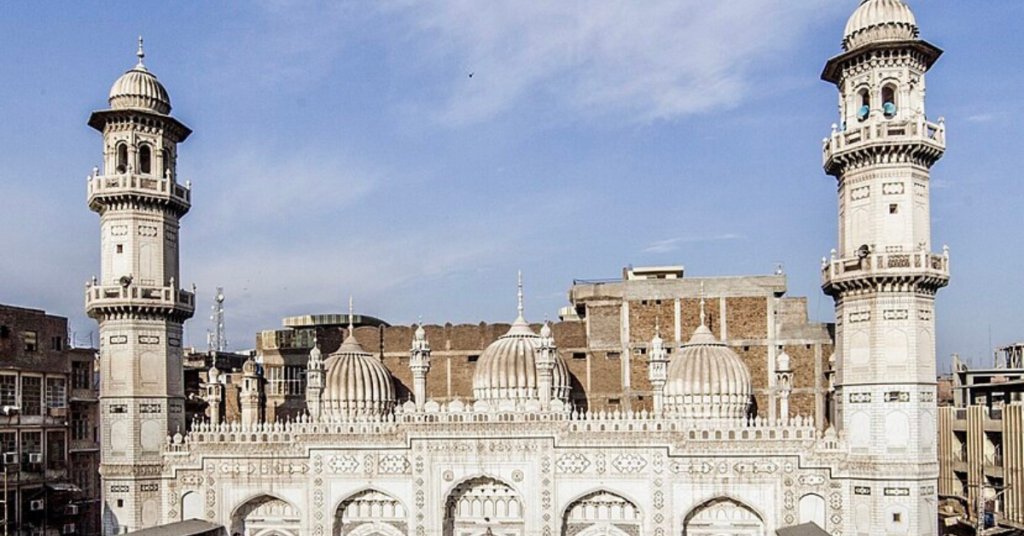
Mahabat Khan Mosque, named after Mughal governor Mahabat Khan, is an architectural marvel. The Mahabat Khan Mosque is a city oasis with its white façade, intricate tilework, and peaceful courtyard. Anyone interested in Islamic architecture should go.
Ghor Khatri
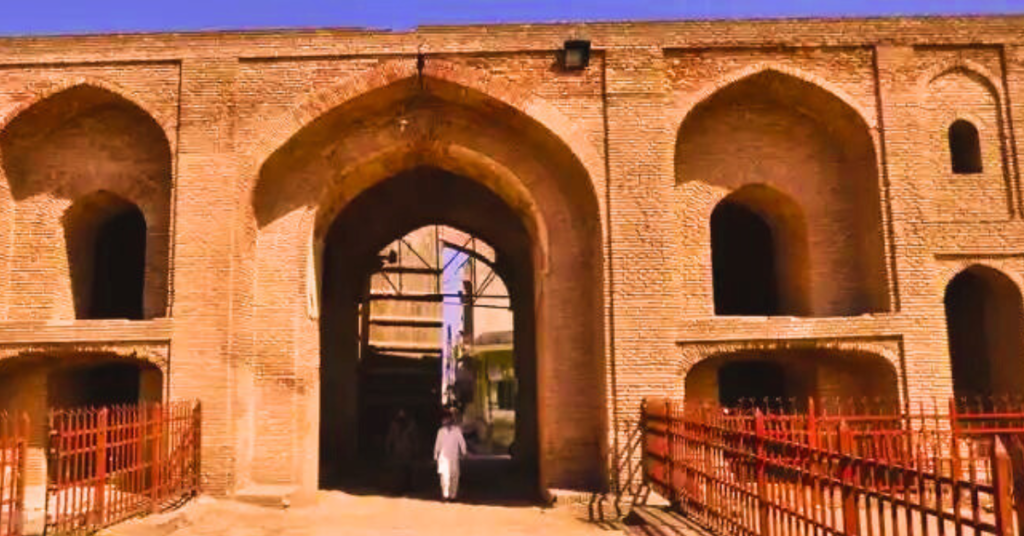
Once a Buddhist monastery and subsequently a Mughal caravanserai, Ghor Khatri is a historical location. It offers a unique blend of archaeological ruins and ancient buildings. The area also has a small museum with relics from various times, making it an intriguing trip for history lovers. Natural Beauty.
Khyber Pass
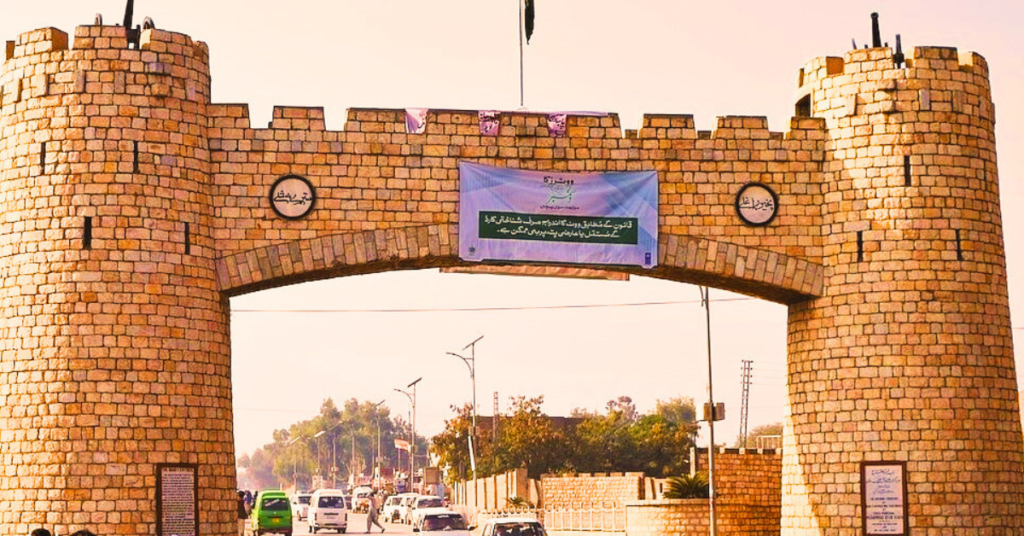
Khyber Pass, The legendary Khyber Pass, connecting Pakistan and Afghanistan, symbolizes the region’s strategic importance. The rugged terrain and breathtaking views make it a favourite spot for adventurers and history enthusiasts.
Shahi Bagh

Shahi Bagh is a lush city oasis. Beautiful gardens, walking paths, and historic structures make it ideal for a stroll or family picnic. The tranquil garden offers a break from city life. Peshawar’s principal square.
Chowk Yadgar
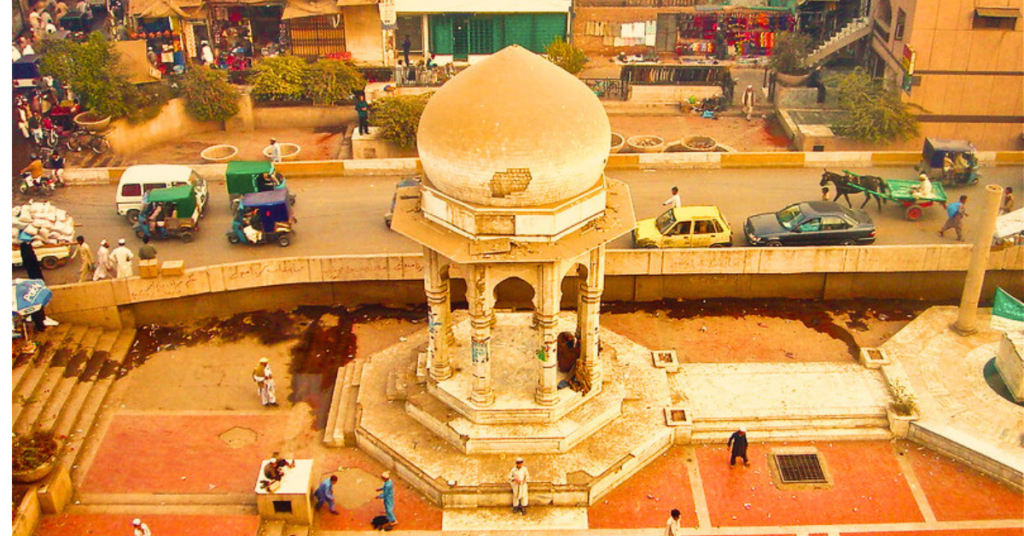
Chowk Yadgar is historically significant. The 1930 Qissa Khwani Bazaar massacre martyrs are honoured. The monument and surrounding area commemorate the city’s stormy past and resilient inhabitants. One of Pakistan’s oldest universities, the University of Peshawar, was founded in 1950. A mix of modern and traditional architecture makes the campus a cultural and intellectual hub. Visitors can explore the beautiful grounds and attend various cultural events.
HayatabadA modern suburb of Peshawar offers a glimpse into the city’s contemporary lifestyle. With its parks, shopping centres, and residential areas, Hayatabad is a popular spot for locals and visitors. It’s an excellent spot to experience the modern side of Peshawar.
Islamia College
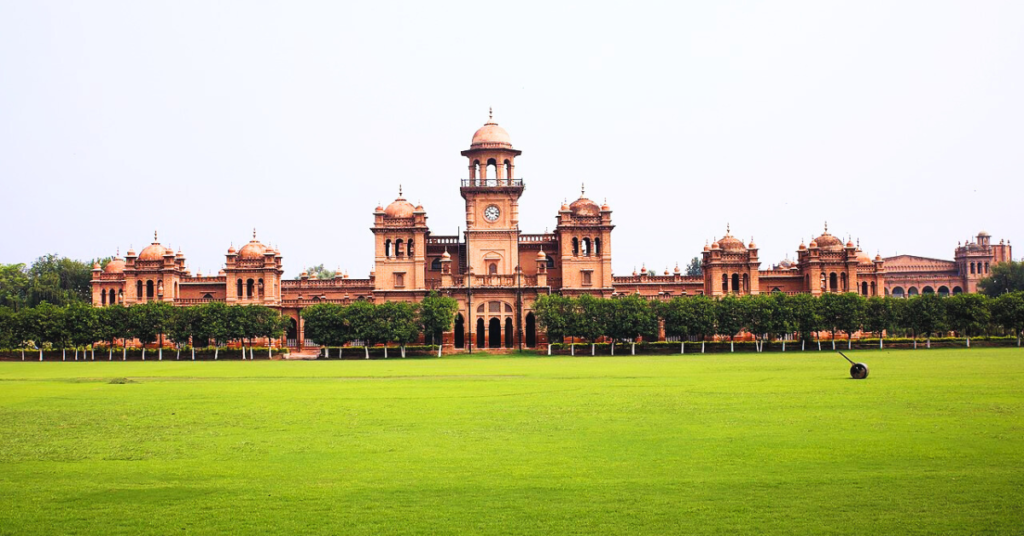
Islamia College Founded in 1913, Islamia College is an architectural marvel. The college’s magnificent tower, with its elaborate design and lush green grounds, symbolises Peshawar’s educational tradition. The institution has played an essential part in the region’s history and continues to be a learning centre. Shopping and Cuisine Namak Mand Namak Mandi is a delight for food lovers. Famous for its traditional meat dishes, particularly the luscious lamb Karahi, this market is a must-visit for anybody eager to enjoy Peshawari food. The lively ambience and excellent scents make for a fantastic eating experience. Karkhano Market
Karkhano Market is a lively retail attraction. Known for its huge array of goods, from electronics to clothing, this market is a shopper’s haven. The vivid stalls and friendly vendors make it a pleasant area to explore and find unusual products. Peshawar is a city that flawlessly integrates the old with the new. Its historical sites, cultural attractions, natural beauty, and modern comforts offer something for everyone. Peshawar offers a varied and diverse experience, from historic bazaars to majestic mosques to local food. Peshawar is best visited in the spring (March) and fall (September–November), when the weather is nice. Are visitors safe in Peshawar Tourists can safely visit Peshawar but they should follow travel recommendations and take measures. What should I wear in Peshawar? Visit religious and cultural venues in modest apparel. Conservative clothes are polite. Can I find international food in Peshawar? International restaurants are available in Peshawar, although local Peshawari food is preferred. What are Peshawar’s transport options? Peshawar has taxis, rickshaws, and buses. You can also use Uber and Careem.

